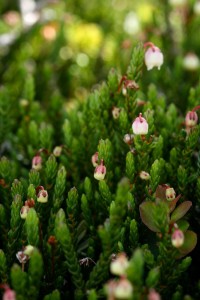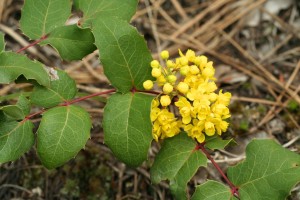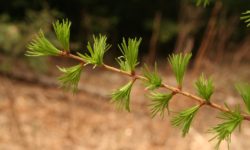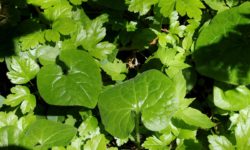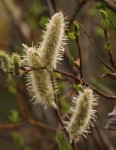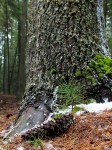Compared to the Midwest, the forests of North Idaho are filled with more conifers than deciduous trees. Conifers keep our forests green through winter as do their evergreen counterparts hugging the ground.
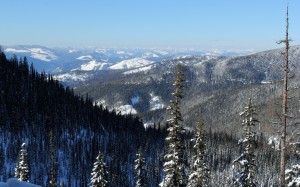
Evergreen plants, including conifers, can photosynthesize during winter despite the cold temperatures
While not as bright and vibrant as deciduous plants that steal the show in the summer, evergreen plants peaking through the snow keep the forest floor green in winter. One of the most obvious is Oregon-grape with its pointy leaves. A few other evergreen plants growing in the region include kinnikinnick, Labrador tea, bog cranberry, creeping snowberry, white and pink mountain-heather, crowberry and prince’s pine.
Unlike deciduous plants that lose their leaves in the fall, evergreen plants (as the name implies) stay green by keeping their leaves year-round. Every single leaf isn’t kept every year. Some conifers retain their needles for two to three years before shedding them.
For the most part, evergreen plants keep their leaves to conserve energy. Often evergreen plants grow in areas where nutrients are sparse, so growing an entire set of leaves every year is costly.
Evergreen plants are more prevalent at higher latitudes and higher elevations because the growing season is shorter. Growing all new leaves every year has to be advantageous for the plant instead of keeping the leaves year-round.
For deciduous plants, one of the advantages of shedding leaves is the reduced chance of damage from snow and ice. An early snowfall when the leaves are still on deciduous trees exemplifies the damage that can occur when the branches become too heavy with snow and ice.
Conifers possess a unique shape that allows for snow-shedding and their leaves (needles) are also smaller than deciduous leaves and catch less snow.
A benefit of keeping leaves year-round is that evergreen plants can continue to photosynthesize during the winter. However, the rate of photosynthesis is significantly slower in the winter than in the summer.
Photosynthesis is the process of using light energy to convert carbon dioxide and water into sugar and oxygen. Light and carbon dioxide are available in the winter but water is less available.
Water is a key factor for evergreen plants in winter. Water doesn’t move as quickly from the roots to the leaves in winter and less water is available from the soil. Often evergreen plants rely on water stored in the stems for photosynthesis. Some plants can even obtain snow meltwater through their leaves or thinnest bark.
With precious water in the leaves, evergreen plants have to be careful not to loose it and they have several adaptations to prevent water loss. Water loss happens because water vapor moves from areas of high concentration (inside leaves) to areas of low concentration (air).
Most evergreen plants have a waxy coating on their leaves to reduce water loss and also to protect new growth from ultraviolet radiation. Without a waxy coating the leaves would dry out quickly.
Evergreen leaves also have tight stomatal closures which are holes in the leaves that allow for air exchange (carbon dioxide in and oxygen out).
Other ways evergreen plants reduce water loss are by having dense foliage to reduce air movement and by having a fuzzy underside on leaves to create a zone of insulation. Both reduce the concentration gradient immediately outside the leaf and, therefore, help reduce water loss.
Even if photosynthetic rates are slow in winter, evergreen plants can take advantage of spring warmth and increasing sunlight to jumpstart their growing season. For low-lying evergreen plants, spring and late fall may be the only time deciduous vegetation doesn’t overshadow them and block their sunlight.

